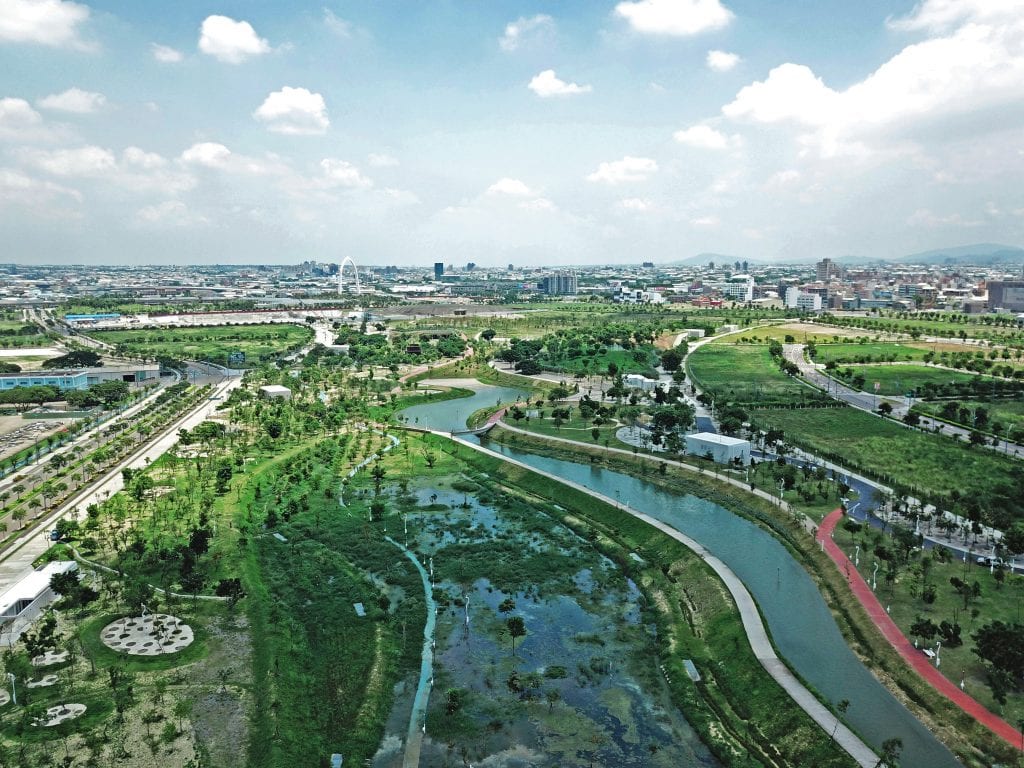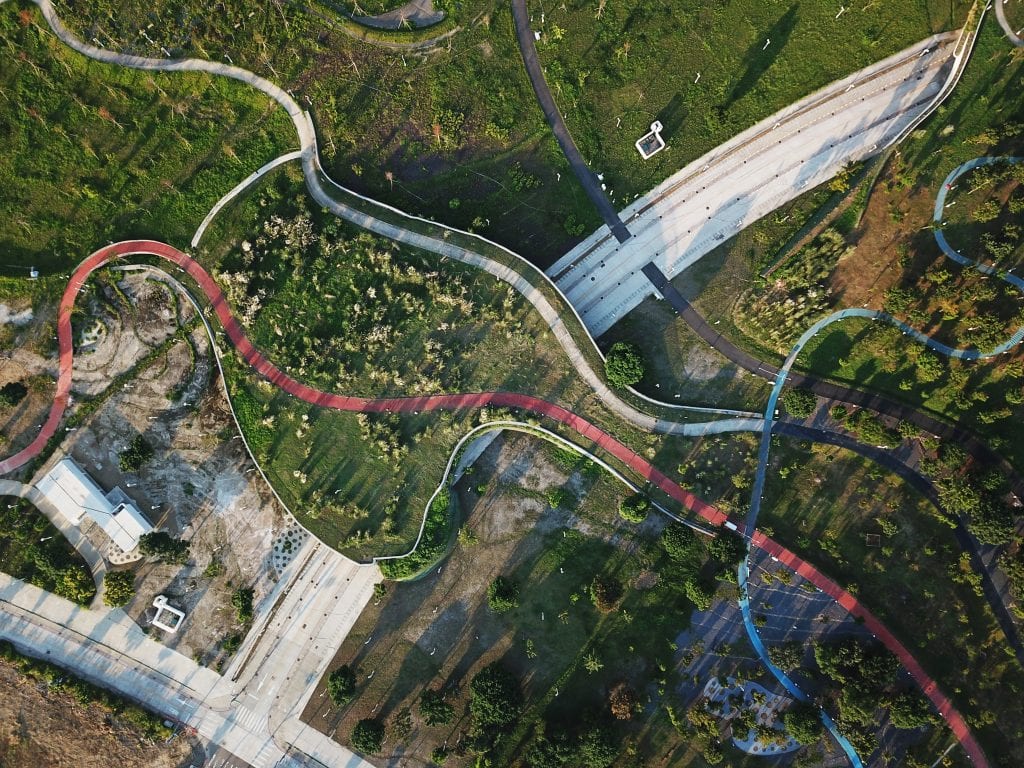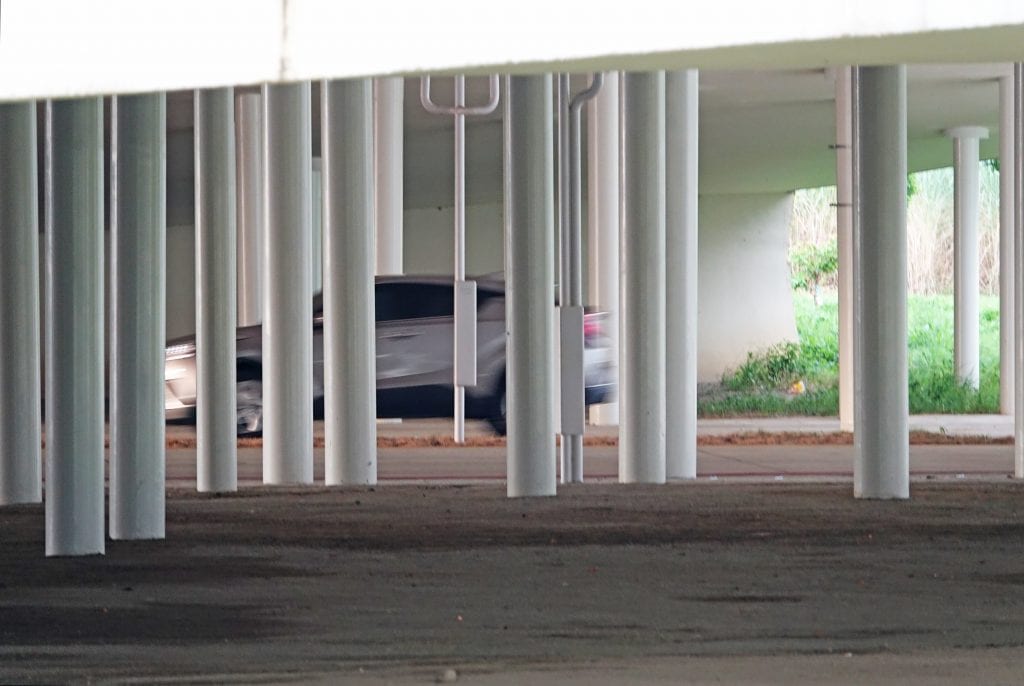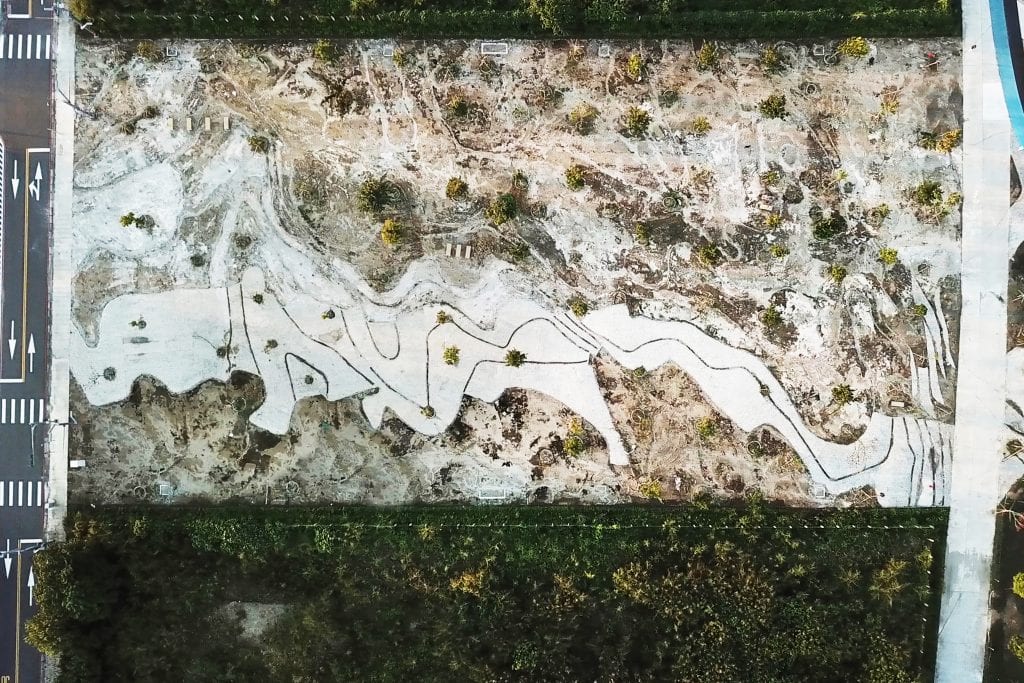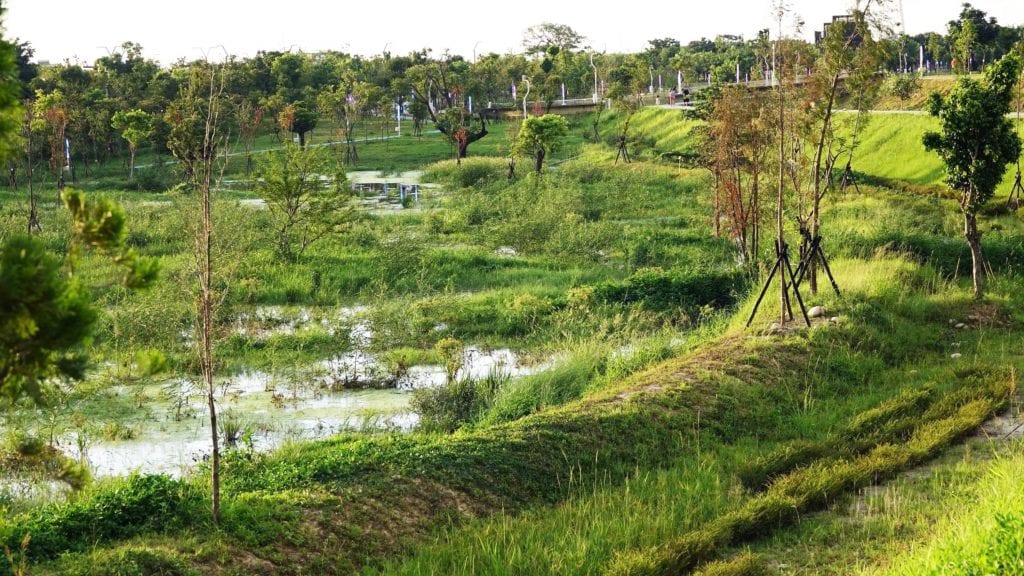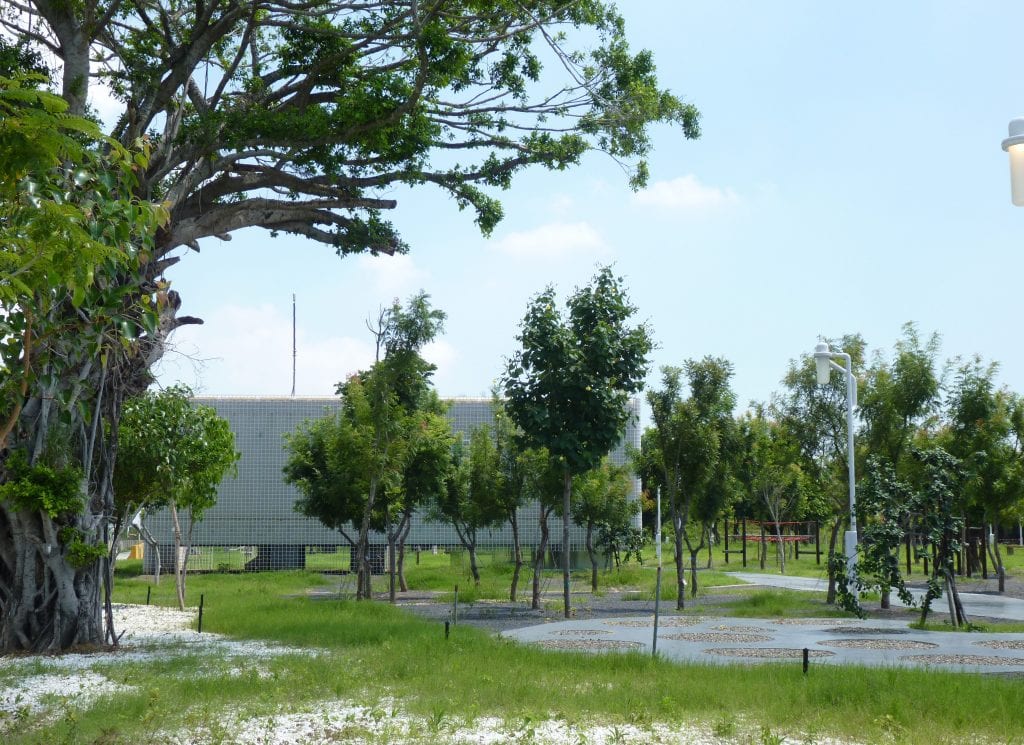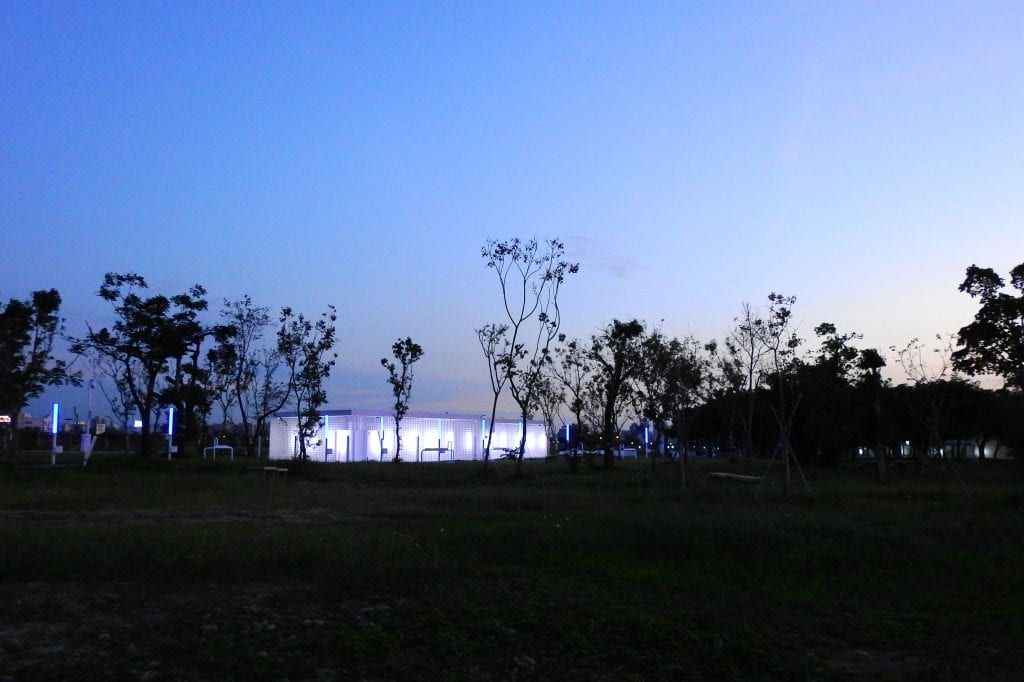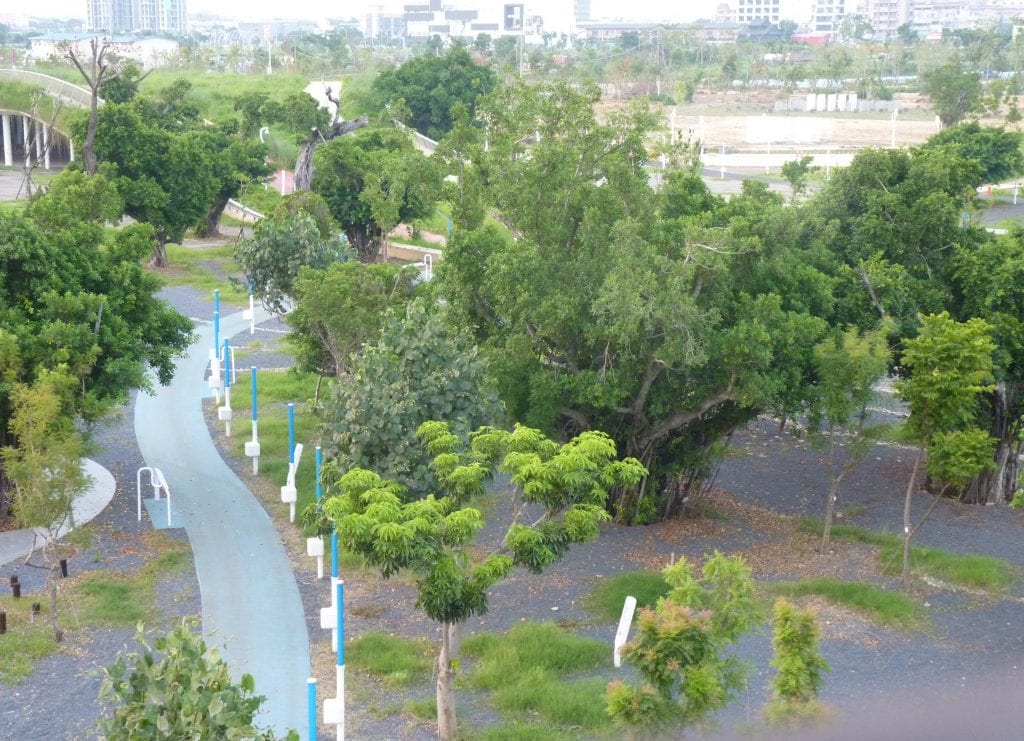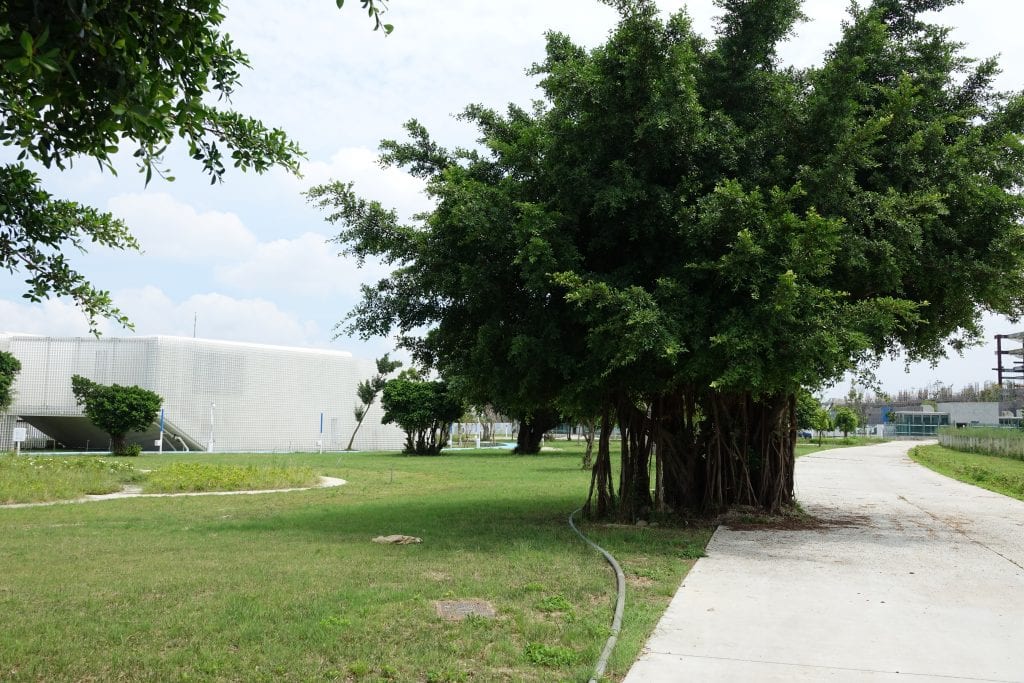The abandonment and closing of airports, including decommissioning those that were used for military purposes, has presented design communities with several opportunities to convert them entirely to civilian purposes. Notable among those which have been the result of competitions are Orange County Great Park, Irvine, California (Ken Smith Landscape Architects), The Estonian National Museum (Dan Dorell, Lina Ghotmeh and Tsuyoshi Tane), and Toronto’s less successful Downsview Park competition, whereby the winning design by OMA, with trees as the primary feature, has been basically ignored. Instead, the area has become the site of numerous commercial and residential projects.
The Taichung Gateway Park Competition (now Taichung Central Park), won by Catherine Mosbach and Philippe Rahm with Ricky Liu and Associates, has been completed after a two-stage international competition and an intensive development phase. Also the site of a previous city airport, this was an ambitious project, covering a 168-acre parcel of land. The original competition participants were faced with a large, comprehensive program, not only incorporating a number of significant features, but doing so sustainably. When we reported on the results of that competition in 2012, author Dan Madryga summed up the challenge presented to the designers as follows:
Serving as the central backbone of the new community, Gateway Park will help set the standard for Gateway City’s subsequent development. The open, two-stage competition challenged architects, planners, and landscape architects to develop a meandering 168-acre parcel of land into a functionally complex recreational park running north to south through the new city, linking its various functional zones. The competition organizers sought a park that combined “tranquility, ecology, landscaping, disaster mitigation, carbon reduction and recreation.” Various recreational and cultural facilities had to be skillfully integrated into the park’s fabric, including a Cultural Center, Movie City, and the aforementioned Taiwan Tower. With a preliminary construction budget set at approximately US$85,000,000, the park is certainly a large-scale, high stakes endeavor with great potential.*

Middle leisure land Image with pavilion: ©Mosbach/Rahm
In the meantime the development phase saw the Mosbach/Rahm team settle on an interesting idea, placing structures along the breath of the site, representing “senses” according to the Rudolph Steiner method. For some, this may hark back to Bernard Tschumi’s “follies”, which were an essential element of his winning design for Parc de la Villette in Paris. In this case, it can be seen in its value not only for its educational/discovery features, but rather as a visual site-integration strategy with thematic connecting links.
The park is to be dedicated on December 6th in Taichung. With its multiple attractions, it promises to be a most important addition to the life and the well-being of the residents of the city and beyond.
*For the original competition Mosbach/Rahm entry: https://competitions.org/2012/01/taichung-gateway-park/
Concept Narrative
Situated beneath the Tropic of Cancer, the climate of Taiwan is warmed by the Kuro-Shio, one of the largest marine currents in the world. The island possesses a hot and humid tropical climate that serves as a counterbalance to the mountain range that has a more temperate environment. The goal of Central Park is to give back the outdoors to the inhabitants by creating landscapes where the extremes of the Taichung climate are reshaped.
The park uses a specific language, one of universal scope in its capacity to address the issues at stake at their different scales: the geographic scale by the transformation of an airport into an urban landscape; the urban scale by the provision of unique cultural facilities integrated into a vast public realm; the domestic scale in the porosity between districts that allow sharing of recreational opportunities. A successful interlocking relationship of these levels was always in the forefront of our design strategy.
This overall design concept explores lithosphere—water, topography, and soil, seeking mitigation of atmosphere’s least desired extremes—heat, humidity, and pollution. Overlapping mapping features a variety in landscape design: more comfortable ‘niches’ where natural and artificial installations are mixed, densified and dilated, highlighting sensual experiences in various forms. The performance of the atmosphere is accentuated by lithosphere’s features—all connected by a singular path through leisure’s lands, sports lands and play lands.
The landscape unfolds from North to South, whereby urban traffic is partially absorbed under extended topographies featuring a variety of gardens. The commanding presence of distant hills on the horizon serves as a linking element from North to South. Yet standing before them, they also have an intimate and protective function, for the staging of cultural events or regular shelter: Northern Lounge, Eastern Spiral, Middle Yard, Eastern Sky Dome and Middle Clearings.
The park acts as a moderator: it proposes a variety of beaches, of gardens, of places and offers to the people of Taichung sensual experiences—partly based on the principle of senses of Rudolf Steiner— with twelve Fields: Speech, Taste, Hearing, Equilibrium, Thinking, Vision, Movement, Ego, Touch, Warmth, Smell, Life- providing visitors with games and recreational activities, meeting opportunities, or just exploring the various features of the landscape on foot.
Finally, Central Park provides a unique public space for physical and spiritual rejuvenation, where one can spend time protected from heat and humidity, and can enjoy an environment free from pollution—ideal for family outings with children. From the comfort and sensual pleasures it provides to a city’s inhabitants, the “park” has become essential, not only as an attraction, but also as a major contribution to the well being of the community.

View to north horizon from center of site
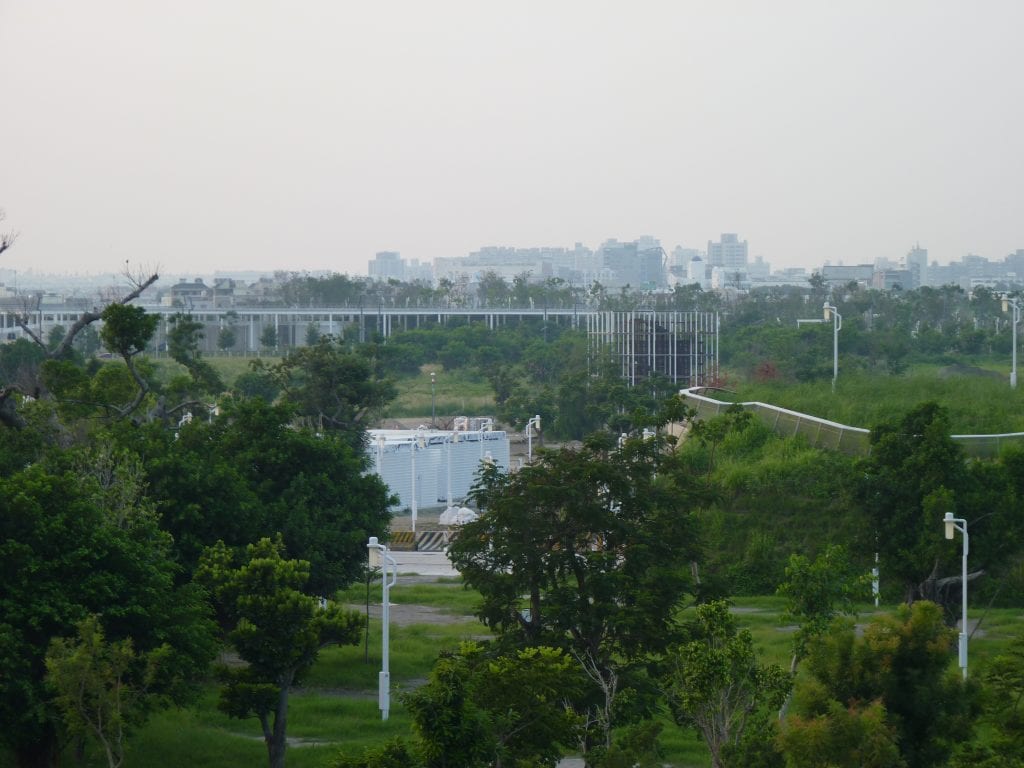
Photovoltaic Field – North Horizon
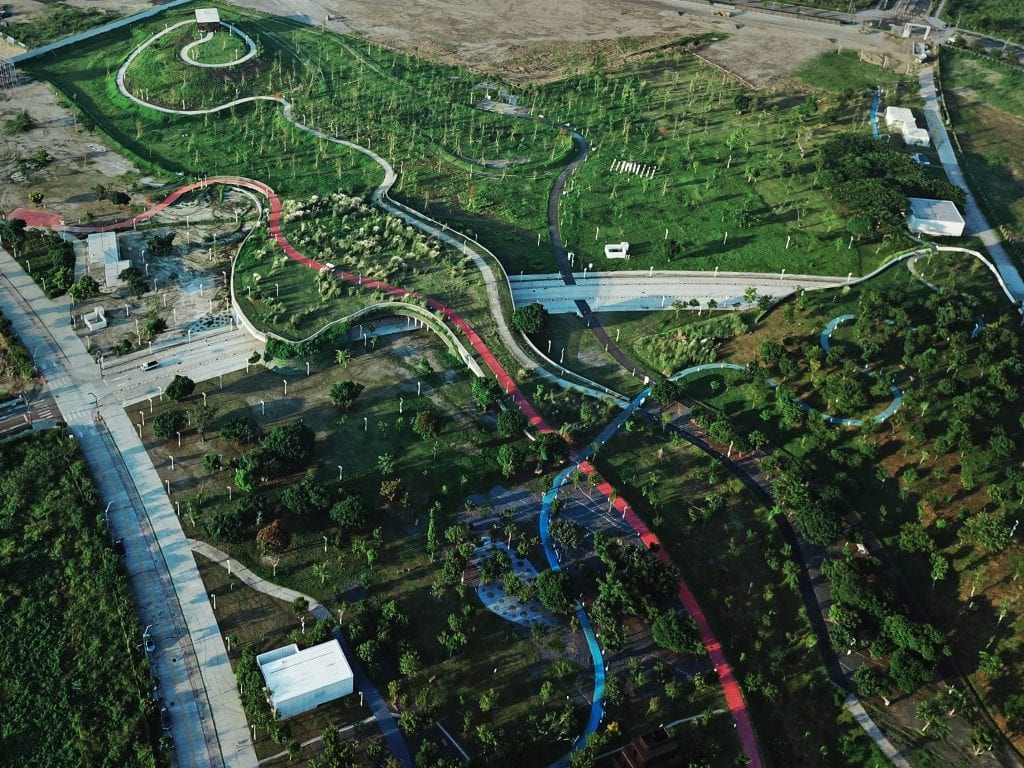
Northern Sport area in front of future Cultural Center by SANAA
All photos courtesy Catherine Mosbach/Philippe Rahm




























